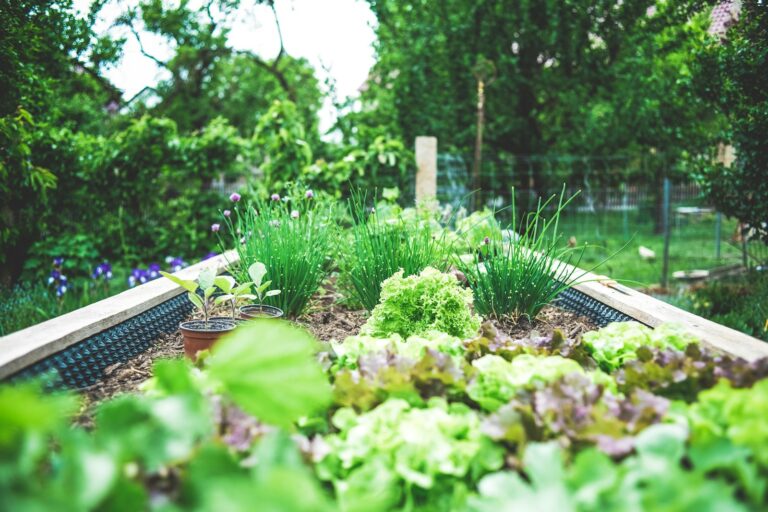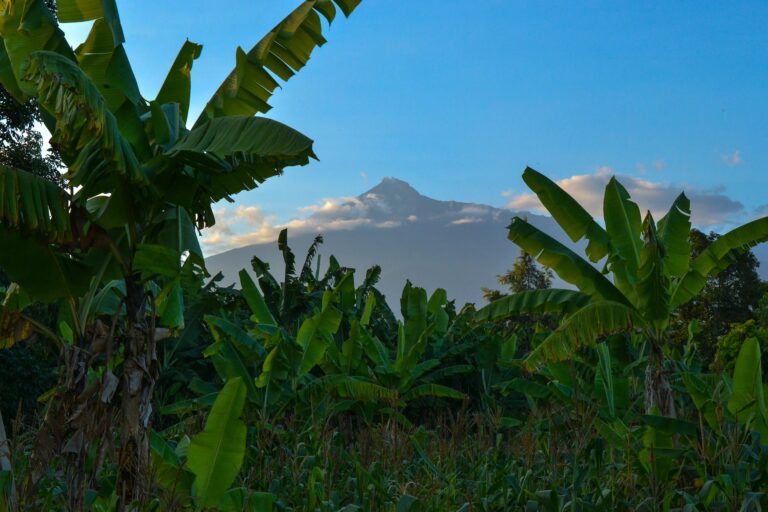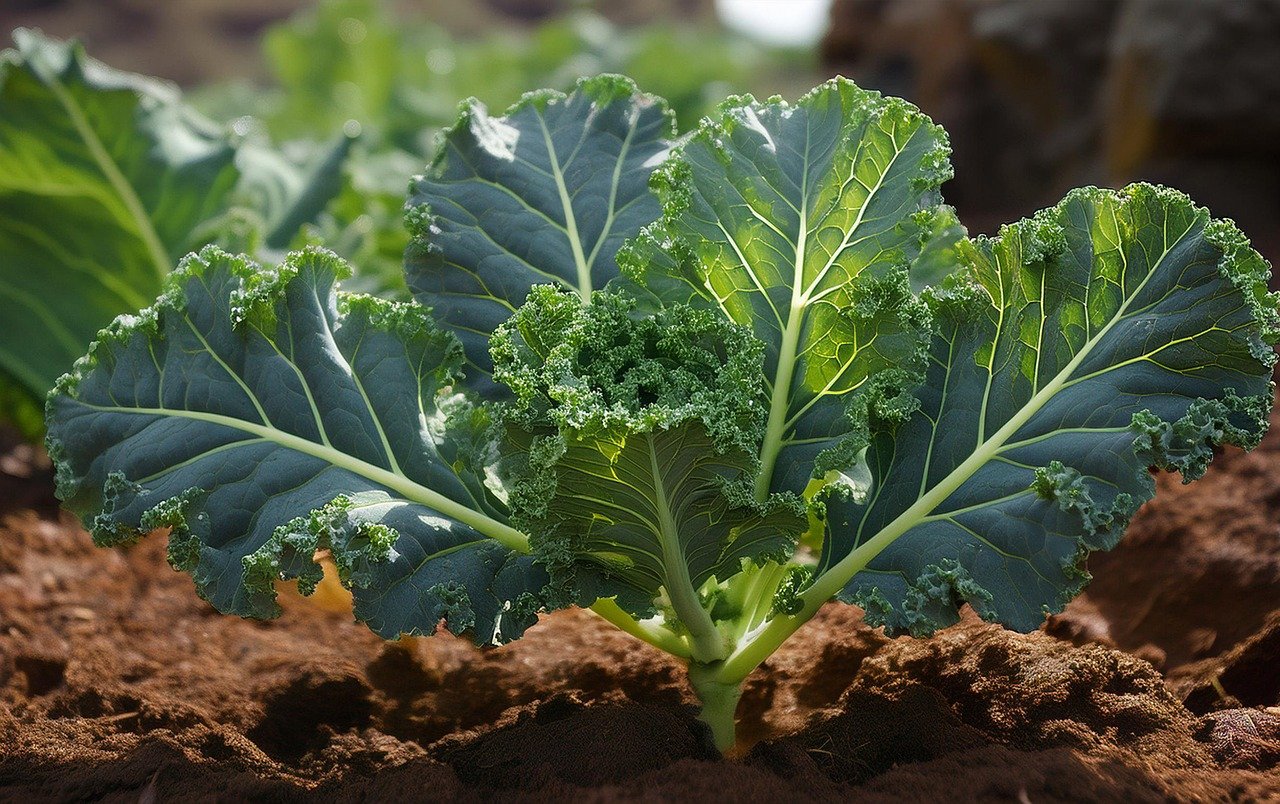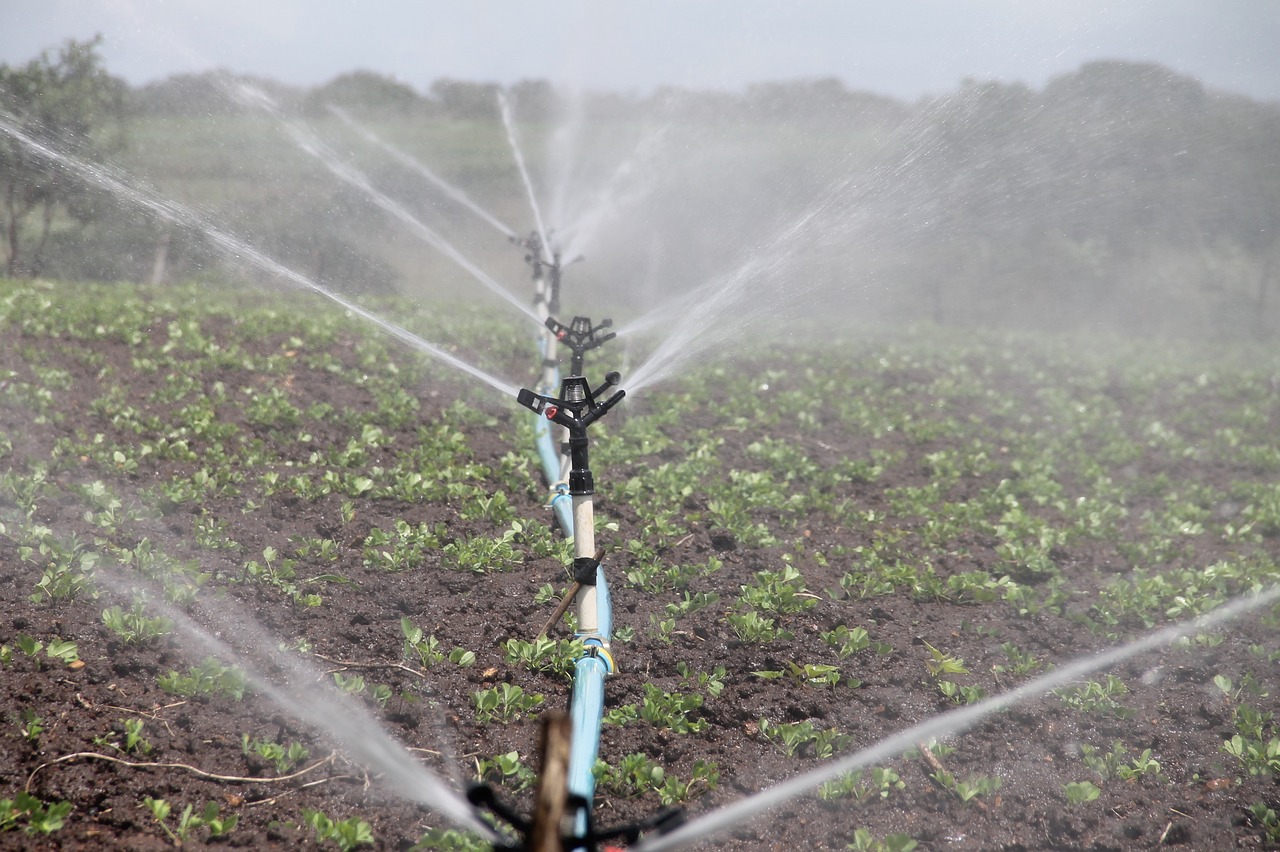Top Water-Saving Irrigation Systems for Kenyan Small-Scale Farmers
Are you a small-scale farmer in Kenya seeking water-saving irrigation systems to optimize your crop yield? Look no further, as we delve into the top solutions available to you.
From efficient drip irrigation and sprinkler systems to innovative rainwater harvesting and solar-powered technologies, there are a plethora of options to explore.
With water scarcity becoming an increasingly pressing issue, discovering the right irrigation system could be the key to your agricultural success.
So, let's dive into the world of water-saving irrigation systems and uncover the possibilities that await you.
Drip Irrigation
Drip irrigation is a highly efficient and practical method of delivering water directly to the roots of plants, resulting in significant water savings and increased crop yields. This technique involves the slow and precise application of water, ensuring that plants receive the necessary moisture without wasting any resources.
One of the key drip irrigation techniques is the use of drip emitters or drippers. These small devices are placed near the base of each plant and deliver water in a controlled manner. By directly targeting the root zone, drip emitters minimize evaporation and ensure that water is used efficiently.
Innovative drip irrigation systems have been developed to further enhance water savings. For example, some systems incorporate sensors that monitor soil moisture levels and adjust the irrigation schedule accordingly. This not only prevents overwatering but also optimizes water usage based on the specific needs of the plants.
Additionally, the use of mulch in conjunction with drip irrigation can further improve water efficiency. Mulch helps to retain moisture in the soil and reduce evaporation, allowing plants to thrive with less water.
Sprinkler Irrigation
Sprinkler irrigation systems offer high efficiency in water distribution, ensuring that water reaches the crops evenly and minimizing water wastage.
Additionally, these systems are cost-effective, as they require less labor compared to other irrigation methods.
Moreover, sprinkler irrigation can have environmental benefits such as reducing soil erosion and conserving water resources.
Efficiency of Sprinklers
Using water-efficient irrigation systems can significantly improve the effectiveness and productivity of agricultural practices in Kenya.
When it comes to sprinkler irrigation, the efficiency of the system plays a crucial role in conserving water. Sprinkler systems are designed to distribute water evenly over the cultivated area, minimizing water wastage. The efficiency of sprinklers is determined by factors such as nozzle design, pressure regulation, and spacing between sprinklers.
Upgrading to modern sprinkler systems with adjustable nozzles and pressure regulators can help reduce water loss due to overspray, runoff, and evaporation. Additionally, proper placement and spacing of sprinklers ensure that water is distributed uniformly, maximizing crop yield and minimizing water consumption.
Cost-effectiveness of Sprinklers
Upgrading to modern, water-efficient sprinkler systems can yield substantial cost savings for farmers practicing sprinkler irrigation in Kenya. These advanced systems not only conserve water but also help reduce operational costs and increase overall productivity. By adopting water-saving techniques and implementing efficient water conservation methods, farmers can optimize their irrigation practices and achieve better financial outcomes.
To better understand the cost-effectiveness of sprinkler irrigation, let's compare the initial investment and potential savings of traditional flood irrigation versus modern sprinkler systems. The table below highlights the key factors:
| Factors | Traditional Flood Irrigation | Modern Sprinkler System |
|---|---|---|
| Initial Investment | High | Moderate |
| Water Consumption | Excessive | Efficient |
| Labor Requirements | High | Reduced |
| Energy Usage | N/A | Moderate |
| Yield Improvement | Limited | Substantial |
| Overall Cost Savings | Minimal | Significant |
As shown in the table, upgrading to modern sprinkler systems offers a more cost-effective approach to irrigation. While the initial investment may be moderate, the savings in water consumption, labor, and potential yield improvement make it a worthwhile investment for Kenyan small-scale farmers.
Environmental Benefits of Sprinklers
To further explore the benefits of sprinkler irrigation, let's now examine the positive impacts it has on the environment.
Sprinkler irrigation systems offer significant environmental benefits by incorporating water-saving techniques and promoting sustainable farming practices. By precisely delivering water to crops, sprinklers reduce water wastage and minimize runoff, preventing soil erosion and water pollution. This efficient water distribution also helps conserve the precious resource by using only the required amount of water, ensuring that no excess water is wasted.
Furthermore, sprinkler systems allow farmers to control the timing and duration of irrigation, reducing the likelihood of overwatering and promoting healthier plant growth. By adopting sprinkler irrigation, small-scale farmers in Kenya can contribute to a more sustainable and environmentally friendly agricultural sector.
Micro-Sprinkler Irrigation
With the aim of maximizing water efficiency, micro-sprinkler irrigation systems offer Kenyan farmers a practical and effective solution for irrigating their crops. These systems are designed to distribute water in a targeted and controlled manner, ensuring that the plants receive the right amount of moisture without wastage.
Here are four reasons why micro-sprinkler irrigation is a wise choice for small-scale farmers in Kenya:
- Micro sprinkler efficiency: Micro-sprinkler systems are designed to deliver water directly to the root zone of the plants, reducing water loss through evaporation and surface runoff. This targeted approach ensures that the plants receive the water they need, resulting in improved crop yields and reduced water wastage.
- Cost effectiveness: Micro-sprinkler systems are relatively affordable and easy to install, making them a cost-effective choice for small-scale farmers. These systems require minimal maintenance and can be easily adjusted to accommodate different crop types and field conditions. With proper management, micro-sprinkler irrigation can help farmers save on water and energy costs in the long run.
- Uniform water distribution: Micro-sprinkler systems are designed to provide uniform water distribution across the field, ensuring that all plants receive an equal amount of moisture. This helps to prevent overwatering or underwatering, which can lead to crop stress and reduced yields.
- Flexibility and adaptability: Micro-sprinkler systems can be easily customized to meet the specific needs of different crops and soil types. Farmers can adjust the flow rate, spray pattern, and spacing of the sprinklers to ensure optimal irrigation. This flexibility allows farmers to adapt their irrigation practices to changing weather conditions and crop requirements.
Rainwater Harvesting Systems
Now let's explore the benefits of rainwater harvesting and the different types of rainwater tanks available.
Rainwater harvesting is a practical solution for Kenyan farmers to collect and store rainwater for irrigation purposes. By utilizing rainwater, farmers can reduce their reliance on traditional water sources and conserve precious freshwater resources.
Different types of rainwater tanks, such as above-ground tanks and underground cisterns, offer farmers flexibility in choosing the most suitable option for their needs.
Benefits of Rainwater Harvesting
Rainwater harvesting systems provide numerous benefits for farmers in Kenya, allowing them to conserve water and optimize irrigation practices. Here are four key benefits of rainwater harvesting:
- Water conservation: Rainwater harvesting helps farmers reduce their reliance on scarce water resources, such as rivers and wells. By capturing and storing rainwater, farmers can use it for irrigation purposes, reducing the need for groundwater extraction.
- Cost savings: Implementing rainwater harvesting systems can lead to significant cost savings for farmers. They can reduce their dependence on expensive irrigation methods, such as pumping water from distant sources or purchasing water from suppliers. Additionally, rainwater is free, making it a cost-effective alternative for irrigation.
- Improved crop yield: Rainwater is often cleaner and contains fewer contaminants compared to other water sources. Using rainwater for irrigation can improve crop health and productivity, leading to higher yields and better quality produce.
- Environmental sustainability: Rainwater harvesting promotes sustainable agricultural practices by reducing the strain on natural water sources. It helps maintain ecological balance, as farmers extract less water from rivers and aquifers, preserving natural habitats and preventing water scarcity issues.
Types of Rainwater Tanks
To further explore the benefits of rainwater harvesting, let's now examine the various types of rainwater tanks, or rainwater harvesting systems, available for Kenyan farmers.
Rainwater storage is a crucial aspect of water conservation, especially in regions with limited access to clean water sources. There are several types of rainwater tanks that can be used for this purpose.
The most common type is the above-ground tank, which is usually made of plastic or concrete and comes in various sizes to suit different needs.
Another option is the underground tank, which is buried underground and requires less space.
Additionally, there are collapsible tanks, which are portable and can be easily transported and set up.
Each type of rainwater tank has its advantages and disadvantages, so it's important for farmers to carefully consider their specific requirements before choosing the most suitable option for their needs.
Subsurface Irrigation
Subsurface irrigation is a highly efficient method of delivering water directly to plant roots, minimizing evaporation and maximizing water usage efficiency. This technique offers several advantages for Kenyan small-scale farmers who are looking for low-cost options and effective water conservation techniques.
Here are four key benefits of subsurface irrigation:
- Reduced water loss: By delivering water directly to the roots, subsurface irrigation minimizes evaporation. This means that less water is wasted, making it a highly efficient water-saving technique.
- Increased nutrient absorption: Subsurface irrigation ensures that water is delivered precisely to the plant roots, allowing for better nutrient absorption. This can lead to healthier and more productive crops.
- Weed control: Since subsurface irrigation delivers water directly to the root zone, it reduces moisture on the soil surface, making it less conducive for weed growth. This can help farmers save time and resources on weed control.
- Soil erosion prevention: By providing water directly to the root zone, subsurface irrigation helps maintain soil moisture levels and prevents erosion. This is particularly beneficial for areas with sloping terrain or sandy soils prone to erosion.
Solar-Powered Irrigation Systems
Solar-powered irrigation systems offer an efficient and sustainable solution for providing water to crops without relying on external sources of power. These systems utilize solar energy to power the pumps, eliminating the need for electricity or fuel. By harnessing the power of the sun, farmers can save on energy costs and reduce their carbon footprint.
One of the key advantages of solar-powered irrigation systems is their ability to save water. These systems can be equipped with advanced water-saving techniques such as drip irrigation or precision sprinklers, which deliver water directly to the roots of the plants. This targeted approach minimizes water wastage and ensures that crops receive the necessary amount of water for optimal growth.
To further illustrate the benefits of solar-powered irrigation systems, consider the following table:
| Benefits of Solar-Powered Irrigation Systems |
|---|
| 1. Cost-effective solution |
| 2. Environmentally friendly |
| 3. Reduced reliance on external power sources |
| 4. Water-saving techniques |
| 5. Increased crop yield |
Gravity-Fed Irrigation
By exploring alternative irrigation methods, Kenyan farmers can further optimize their water usage and reduce reliance on external power sources. One such method is gravity-fed irrigation, which relies on the natural force of gravity to distribute water to crops. Here are four key points to consider when implementing gravity-fed irrigation:
- Low-cost setup: Gravity-fed irrigation systems require minimal investment as they don't rely on expensive solar powered pumps or other external power sources. Farmers can utilize existing water sources such as rivers or reservoirs and simply channel the water to their fields using gravity.
- Simple operation: Unlike complex irrigation systems that require technical knowledge or regular maintenance, gravity-fed systems are relatively easy to operate. Once the system is set up, it can be managed manually without the need for constant monitoring or adjustment.
- Reduced energy consumption: By eliminating the need for electricity or fossil fuel-powered pumps, gravity-fed irrigation systems significantly reduce energy consumption. This makes them a more sustainable and environmentally friendly option for small-scale farmers.
- Water conservation: Gravity-fed irrigation systems promote water conservation by utilizing the available water resources efficiently. By carefully designing the layout of the system, farmers can ensure that water is distributed evenly and only to the areas that require irrigation, minimizing wastage.
Implementing gravity-fed irrigation systems can provide Kenyan farmers with a cost-effective, low-maintenance, and sustainable solution for their irrigation needs. By harnessing the power of gravity, they can optimize water usage and reduce their reliance on external power sources, ultimately benefiting both their crops and the environment.
Smart Irrigation Technologies
Are you looking for efficient and advanced irrigation methods to maximize water usage on your farm? Smart irrigation technologies and precision irrigation systems are the answer you've been searching for. These innovative techniques combine technology and water management strategies to optimize irrigation practices, resulting in significant water savings and improved crop yield.
Smart irrigation techniques utilize various sensors, weather data, and advanced algorithms to precisely determine the water requirements of each crop. By continuously monitoring soil moisture levels, weather conditions, and evapotranspiration rates, these systems can deliver the right amount of water at the right time, avoiding water wastage and preventing over-irrigation.
Precision irrigation systems, on the other hand, focus on delivering water directly to the root zone of plants, minimizing water loss through evaporation and runoff. Drip irrigation, for instance, utilizes a network of tubes and emitters to deliver water directly to the base of each plant. This targeted approach ensures that water is utilized efficiently, reducing water waste and allowing for precise control over irrigation.
Implementing smart irrigation technologies and precision irrigation systems on your farm can bring numerous benefits. It not only conserves water resources but also reduces energy consumption and labor costs associated with traditional irrigation methods. Furthermore, these technologies enable farmers to remotely monitor and control their irrigation systems, providing convenience and flexibility in managing water resources.




